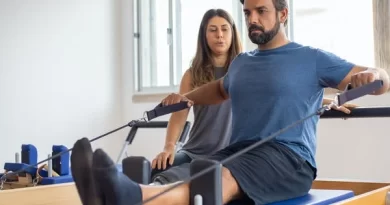Physiotherapy Alleviate Sciatic Nerve Pain
Physiotherapy is a well-known and established method of treating sciatica. It involves various treatments that aim to reduce the pain associated with this condition and help improve mobility, flexibility, strength, and function of the affected area. Physiotherapists are trained in assessing where sciatica is located, what type of treatment is best suited for each individual case, and how to implement an effective plan of treatment.
The sciatic nerve is made up of five nerve roots that come out of your lower back and join together in your buttock area before running down through each leg. When this nerve becomes compressed or irritated it can cause a sharp burning sensation or pain along its path – this is known as sciatica. While some cases are mild and only cause discomfort, more severe cases may be accompanied by numbness or weakness in one or both legs as well as a feeling of pins and needles throughout parts of the affected limb.
To better understand sciatica, it’s important to know what it is, its causes, and potential treatments. There are several potential causes for sciatica including herniated discs, spinal stenosis, spondylolisthesis, injury to the spine due to trauma, tumors on/near nerves in the spine as well as pregnancy due to extra weight/pressure on sensitive areas. Physiotherapy for sciatica involves a combination of exercises, stretches, and manual therapy techniques. The goal of physiotherapy is to reduce pain, improve mobility, and prevent future episodes of sciatica.
Fortunately, there are numerous treatments available to help manage this painful condition. One of these treatments is physiotherapy, which can provide relief from sciatica symptoms and improve your overall quality of life. Physiotherapy can be used to treat sciatica in several ways. First, your physiotherapist may prescribe exercises to help reduce inflammation and improve flexibility in areas where there is pain or tension due to sciatica.
These exercises target specific areas like the lower back, buttock muscles, thighs, and calves in order to stretch them out and make it easier for them to move without causing further irritation or discomfort from sciatic nerve compression. Additionally, strengthening exercises such as squats can help build up strength in those same muscles while providing support for your spine and also improving circulation which helps reduce swelling related to inflammation caused by sciatica.
Your physiotherapist may also suggest manual therapy techniques such as massage therapy or myofascial release which are designed to target specific muscle groups. These techniques can help reduce tension and alleviate pain, which can improve your overall mobility and function. Electrical stimulation may also be used to increase muscle activation in weak areas.
In addition to specific exercises and manual therapy techniques, physiotherapists may also use other treatments like ultrasound therapy or dry needling which can help reduce inflammation around irritated nerves thereby providing much-needed relief from pain. These treatments can be used alone or in combination depending on the severity of symptoms and individual needs.
Overall, physiotherapy can help people with sciatica manage their symptoms more effectively so they can get back to living their lives without being hindered by pain. While some cases of sciatica can be managed with simple lifestyle changes like stretching and postural awareness exercises, other cases may require more intensive physiotherapy treatments in order to achieve meaningful results. If you are experiencing symptoms of sciatica, it’s important to speak with your healthcare provider to determine the best course of action for your individual needs.





